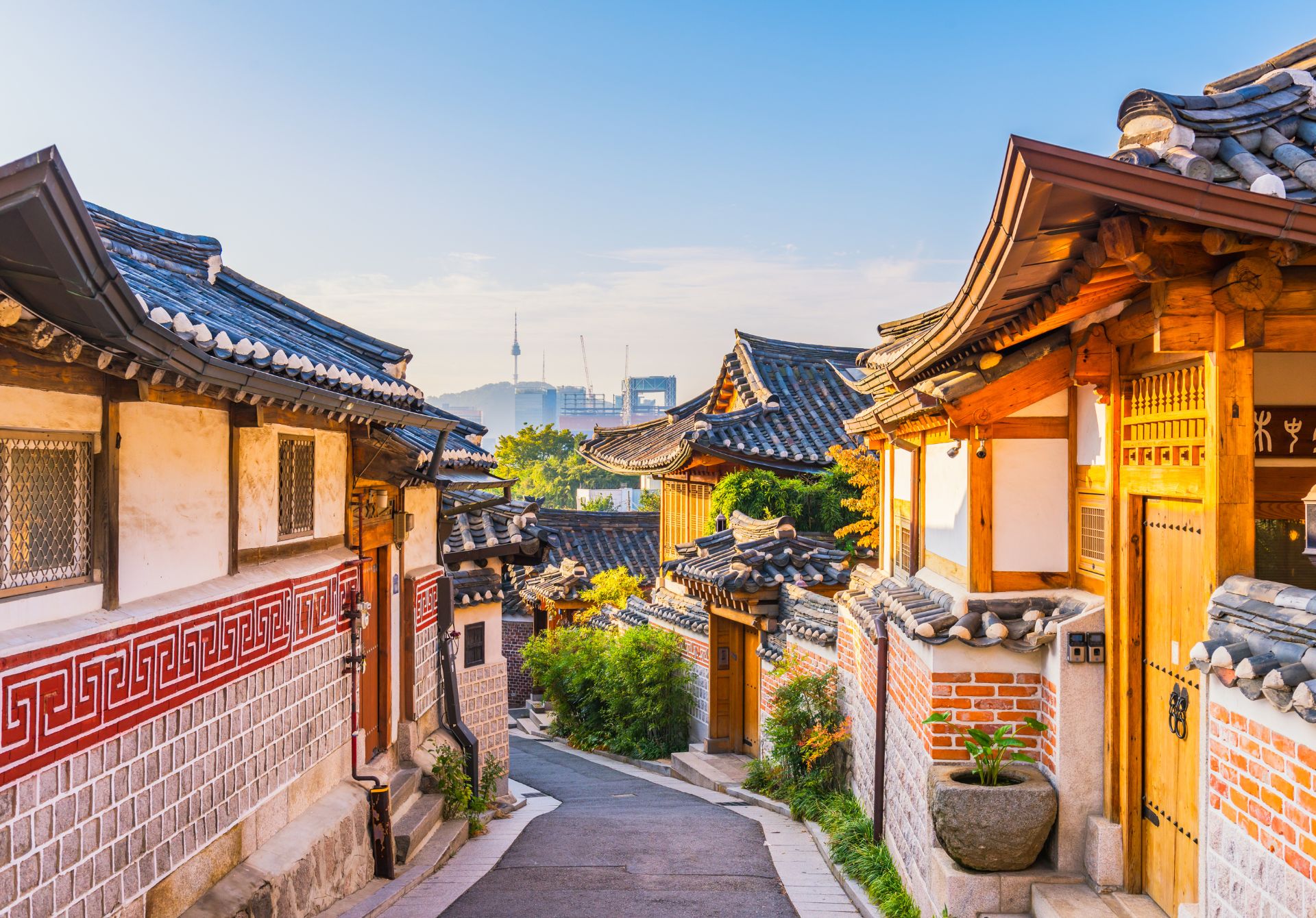Nestled between Gyeongbok Palace and Changdeok Palace in northern Seoul, Bukchon Hanok Village stands as a remarkable testament to Korea’s architectural heritage. Dating back over 600 years to the Joseon Dynasty (1392-1910), this historic neighborhood originally housed noble families and high-ranking government officials due to its strategic location near the royal palaces. The term “Bukchon” literally means “northern village,” referring to its position north of two significant Seoul landmarks: Cheonggyecheon Stream and Jongno.
During the Japanese colonial period (1910-1945), many traditional hanok houses were destroyed or modified. However, Bukchon managed to preserve hundreds of these traditional Korean homes, making it one of the largest clusters of hanok architecture in Seoul. Today, approximately 900 hanok buildings remain in the area, representing various architectural styles from different periods.
Architectural Characteristics
Hanok architecture embodies the sophisticated principles of traditional Korean design, characterized by its harmony with nature and careful consideration of the surrounding environment. The houses in Bukchon showcase distinctive features that define traditional Korean architecture. The most notable elements include the gracefully curved giwa (Korean tile) roofs, the efficient ondol underfloor heating system, and the wooden-floored central hall known as daecheong that promotes natural ventilation. Each home features a central courtyard, or madang, that seamlessly connects indoor and outdoor spaces, while traditional wooden lattice windows (changho) covered with hanji paper complete the authentic aesthetic.
Cultural Preservation and Modern Adaptation
In the 1990s, the Seoul Metropolitan Government initiated comprehensive preservation efforts to protect Bukchon’s cultural heritage. The Bukchon Preservation Project, launched in 2001, provided financial support to homeowners for hanok restoration and maintenance. This initiative has proven successful, with over 300 hanok houses renovated between 2001 and 2020, representing an investment of approximately 80 billion won ($70 million).
Today, Bukchon demonstrates a remarkable balance between preservation and adaptation. The historic hanok have been thoughtfully repurposed into various establishments. Many now serve as cultural centers and museums, while others have been transformed into traditional guesthouses. Art galleries and craft workshops occupy numerous buildings, alongside charming cafes and restaurants. A select number remain as private residences, maintaining the neighborhood’s authentic residential character.
Tourism Impact and Management
Bukchon’s popularity has grown exponentially, with annual visitors increasing from 30,000 in 2007 to over 10 million in 2019. This surge has brought both opportunities and challenges. To address concerns about overtourism, local authorities have implemented comprehensive management strategies. These include a sophisticated visitor guidance system with recommended routes, quiet zone designations in residential areas, and careful regulation of tour group sizes. Enhanced security patrols and community engagement programs help maintain the delicate balance between tourism and preservation.
Cultural Activities and Experiences
Visitors to Bukchon can immerse themselves in various cultural activities that provide profound insights into traditional Korean life. The village offers engaging traditional craft workshops, including the ancient arts of hanji-making and embroidery. Authentic tea ceremonies and traditional music performances regularly take place throughout the neighborhood. Visitors can also experience wearing hanbok, traditional Korean clothing, while exploring the historic streets. Professional photography tours and architectural heritage walks provide opportunities to capture and understand the village’s unique character.
Environmental and Sustainable Practices
Bukchon serves as a model for sustainable urban development, demonstrating how traditional architecture can meet modern environmental standards. The natural materials and design principles used in hanok construction provide excellent insulation and natural ventilation. Recent studies have shown that traditional hanok houses in Bukchon consume 30% less energy for heating and cooling compared to modern buildings of similar size. This efficiency highlights the enduring wisdom of traditional Korean architecture.
Bukchon Hanok Village represents more than just a tourist destination; it is a living testament to Korea’s architectural heritage and cultural resilience. Through careful preservation efforts and thoughtful adaptation, this historic neighborhood has successfully maintained its authentic character while evolving to meet contemporary needs. As urban development continues to transform Seoul, Bukchon stands as a powerful reminder of the importance of preserving cultural heritage and the potential for traditional architecture to inform sustainable urban living practices.
The village’s success in balancing preservation with modern functionality offers valuable lessons for heritage conservation worldwide. As we move forward, Bukchon continues to demonstrate how historical neighborhoods can remain vibrant and relevant in the 21st century while maintaining their cultural integrity and architectural significance.

